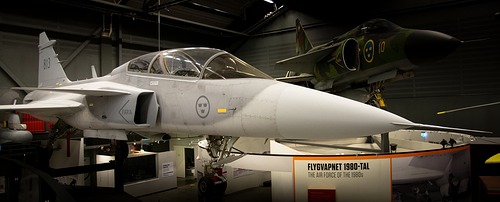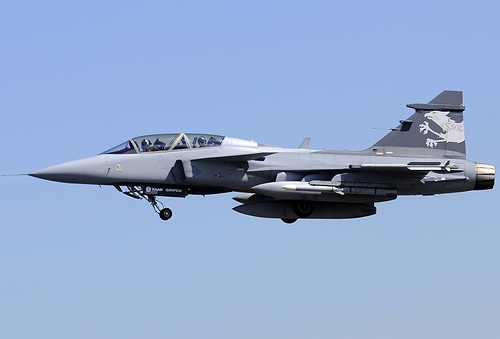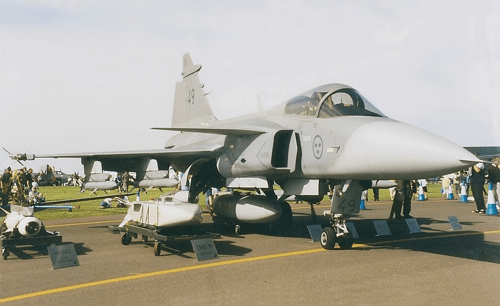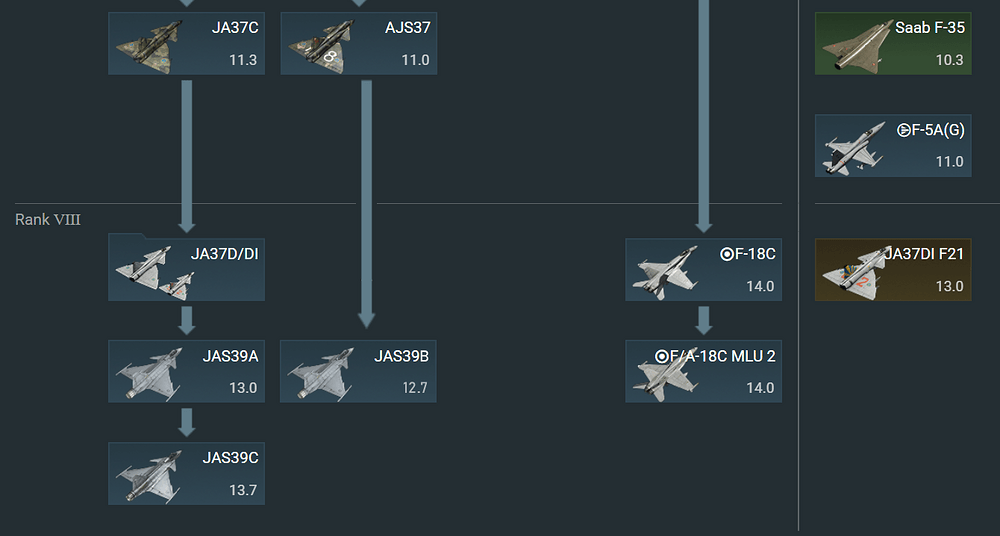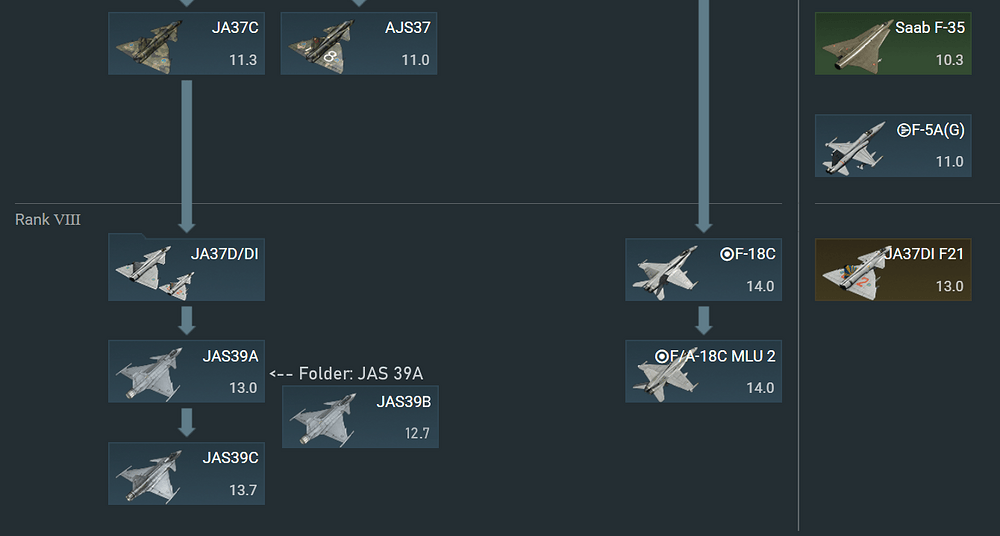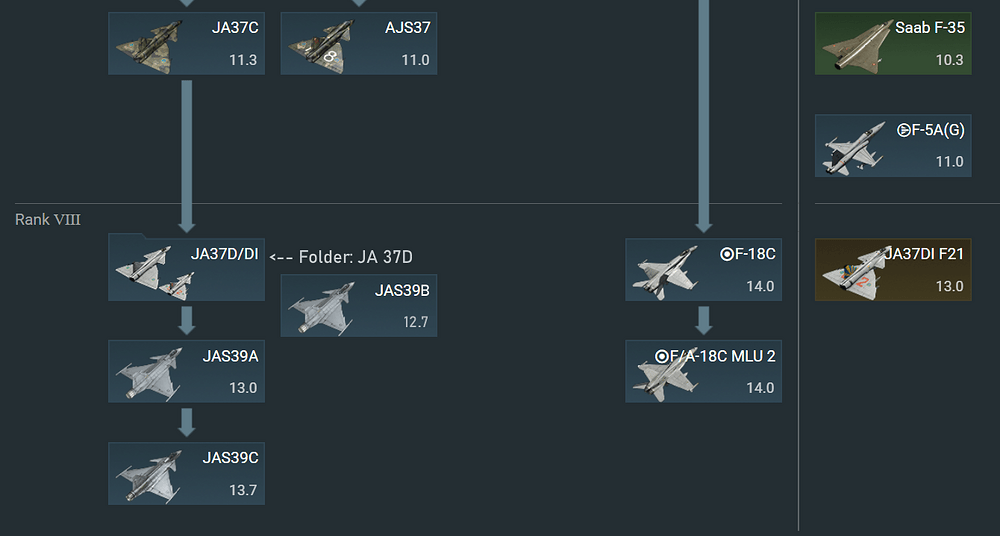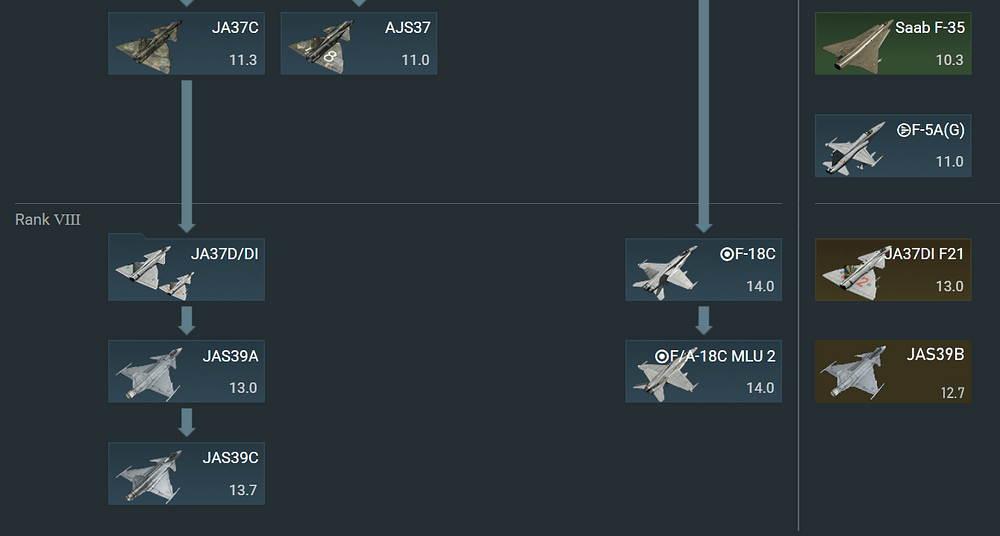JAS 39B Gripen - The Swedish Plan B
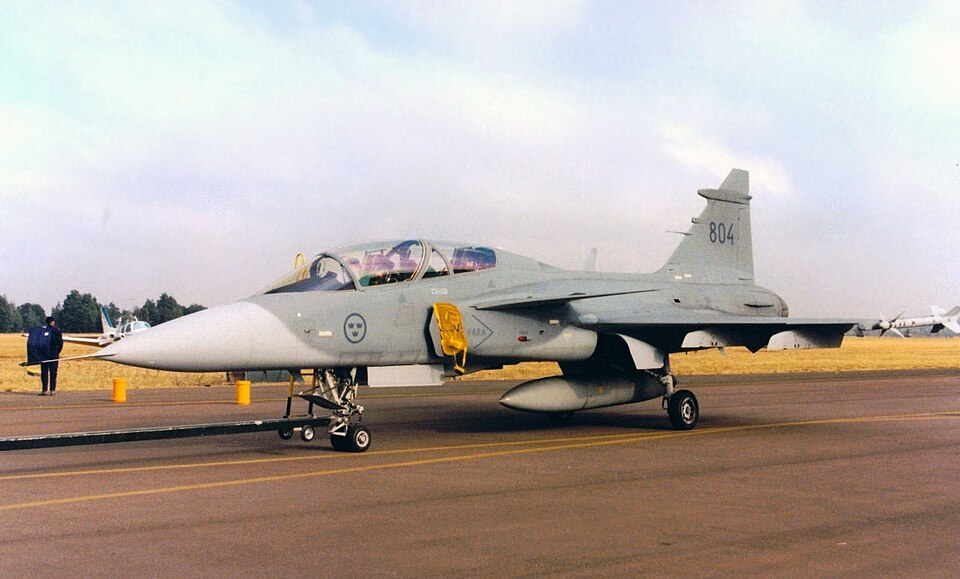
Picture: Bob Adams from George, South Africa - Swedish AF JAS 39B Gripen 804
Deed - Attribution-ShareAlike 2.0 Generic - Creative Commons
The JAS 39 Gripen is most known for its agility, wide selection of weapons and low cost of operation. What many people miss is the fact that the JAS 39 Gripen also is a terrific trainer. New pilots often praise the Gripen as smooth, forgiving and surprisingly easy to fly. Infact, so easy to fly that it feels like the pilot becomes one with the plane itself. With the JAS 39B, D and F, Saab has created advanced twin-seat variants that not only serve as trainers but also retain full combat capability. These aircraft allow instructors to fly along with their students in high-performance training missions while still being able to participate in live operations when required.
History
It is often said that, in the 1990s, when the Gripen first entered operational service with the Swedish Air Force, the general belief was that a dedicated two-seat advanced trainer would not be required. At the time, flight simulators were evolving rapidly and were considered capable of handling the majority of training tasks that had previously demanded an actual aircraft. The assumption was therefore that simulators, together with the single-seat Gripen A, would provide more than enough training capability.
Before long, however, Saab realized that this approach had its shortcomings. No matter how advanced simulators became, they could never fully replicate the experience of flying the aircraft itself, particularly in complex or high-stress scenarios. In addition, for international customers, the lack of a two-seat version was increasingly seen as a disadvantage. This insight made it clear that a dedicated trainer was not only useful but, in fact, essential. As a result, Saab initiated the development of the twin-seat Gripen B.
The Gripen B took to the skies for the first time in 1996, marking the beginning of its service life. Deliveries of the JAS 39B to the Swedish Defence Materiel Administration (FMV) began in 1997. In total, only around fourteen to fifteen aircraft of this variant were produced, which makes it a relatively rare sight. Within the Swedish Air Force, these aircraft primarily served as advanced type conversion trainers, easing the transition for pilots moving onto the JAS 39 platform. They offered students the opportunity to familiarize themselves with the aircraft in a real cockpit environment, while still having the reassurance of an instructor seated behind or infront of them.
Over the course of its service, the JAS 39B did not remain limited to training duties alone. Beyond its role as a type conversion platform, it also functioned as a standard multirole fighter, capable of carrying out many of the same missions as its single-seat counterpart. It was even adapted for certain specialized tasks, which demonstrated its flexibility within the Swedish Air Force’s inventory.
Although the JAS 39B was, by definition, a trainer, it was far from being a lesser aircraft. In terms of performance, it could carry out nearly the same missions as the Gripen A, with only minor differences. The two-seat configuration naturally made the aircraft somewhat heavier and slightly larger, but this had little impact on its overall capability. In practice, the Gripen B remained fully combat-capable and was used by the Swedish Air Force both for training and operational missions.
The JAS 39B has today largely disappeared from active front-line service within the Swedish Air Force. The exact fate of the JAS 39Bs remains largely unknown.
As newer two-seat variants such as the JAS 39D and later the Gripen F became available, the older B models were gradually retired and put into storage, used for new experimental projects or for spare parts. Some aircraft have been placed in storage or used for ground training purposes, while a few have found their way into museums and static displays. In Swedish service, the B was essentially phased out by the mid-2000s, as the fleet transitioned to the more modern C/D versions.
Additionally, some sources say that two of the Gripen Bs got converted to JAS 39Ds and sold to the Thai Air Force.
Famous Gripen Bs
All though only 14-15 units were built, some units might be more known than you might think.
JAS 39B “813”
Photo: Flygvapenmuseum
Sammanfattning - Erkännande 4.0 Internationell - Creative Commons
Flygplan -Flygvapenmuseum / DigitaltMuseum
This particular aircraft joined the Air Force in 2001 and was based at the Skaraborg Air Wing (F 7) in Såtenäs. With a total flight time of 934 hours, the aircraft was transferred to the Swedish Air Force Museum at Malmen, Linköping, in 2017, where it was placed in the exhibition If War Comes and has since been viewed by hundreds of thousands of visitors.
Gripen NG Demo - “39-7”
Picture: Aldo Bidini
Picture: Aldo Bidini - Gallery page https://www.jetphotos.com/photo/6905147Photo https://cdn.jetphotos.com/full/2/28050_1280559795.jpg, GFDL 1.2, File:Saab JAS-39NG Gripen, Saab JP6905147.jpg - Wikimedia Commons
Saab 39 Gripen – Wikipedia
The Gripen NG demonstrator, often called Gripen Demo or 39-7, was a two-seat test aircraft developed to validate the next-generation Gripen E/F technologies. Based on an early 39B, it featured a more powerful GE F414G engine, increased internal fuel, and structural modifications to support higher payloads. The demonstrator first flew on May 27, 2008, and successfully achieved supercruise at Mach 1.2 without afterburner in 2009. It tested advanced systems including the Selex ES-05 Raven AESA radar, Skyward-G IRST, and modern avionics, providing crucial data for the production Gripen E/F. The 39-7 served as a flying bridge between the C/D and E/F series, proving performance, sensor integration, and weapons capabilities.
Fun fact: In Sweden, the Gripen Bs are often nicknamed “Bertil,” a common Swedish male name. The reason for “Bertil” is that it is the Swedish phonetic letter for B.
The Difference Between the JAS 39A and B
The most notable differance is the fact that the canopy is extended to fit a double dorsal cockpit setup, as seen on the picture above. The JAS 39B is also slightly larger (66 cm difference) and has one less fuel tank than the 39A.
The most important difference, gameplay wise, would be the fact the JAS 39B lacks the 27mm Mauser seen on the JAS 39 A, C and E.
War Thunder Armament and Specifcations
War Thunder Armament and Specifcations (Approximately)
| JAS 39B | |
|---|---|
| Engine type: | RM12 - TtWR ≈ 1:1,04 |
| Weight (Empty Weight): | 7000 Kilograms |
| Max Weight: | 12700 Kilograms |
| Length: | 14,8 meters |
| Width: | 8,4 meters |
| Height: | 4,5 meters |
| Crew: | 2 (pilot and co-pilot/student) |
| Climb rate: | 330 m/s |
| Max Speed: | 2 240 Km/h |
| Service ceiling (Max height): | 20000~ meters |
| Thrust (Dry): | 54 kN |
| Thrust (With Afterburner): | 81 kN |
| Max Range: | 2 800 - 3 200 km (ferry range) |
| Armament (Offensive): | None |
| Armament (Air to Air): | Identical to JAS 39A: 6 × RB 74/RB 74M (AIM 9L/M) or 4× RB 71 2 × RB 74/(M) |
| Armament (Air to Ground): | Identical to JAS 39A: 24 × m/71 Rockets, 4 × GBU-12, 16, 2 × GBU-24, 8-16 × Bombs, slick/retarded, 4 × RB 75/75T, 1 × LITENING 2 |
| Countermeasures: | Maximum (+BOL): 720 × |
| Number in Service: | Total: 14-15. Now: In storage and/or upgraded to the JAS 39D-Standard |
Data sheet reference without specs by: Vedrfölnir (modified)
The JAS 39B in War Thunder
Picture of JAS 39A with Rb 99s: Alan D R Brown published via GNU Free Documentation License
Fil:Saab JAS-39A Gripen, Sweden - Air Force AN0334654.jpg – Wikipedia
GNU Free Documentation License – Wikipedia
Since the JAS 39B lacks a cannon, is slightly larger and slightly heavier, it would allow for a lower BR than the JAS 39A, (12.7 instead of 13.0). But two pilots also means about twice the survivability in the event of “pilot snipes” or precise fragmentation kills.
Despite the fact that the JAS 39A could carry BVR weapons such as the Rb 99 (AIM 120 AMRAAM, as seen on the picture above), it cannot in game, which also allows for the two variants, A and C to coexist. This would also apply for the JAS 39B.
While the JAS 39B isn’t needed in terms of balance, it is still a good addition to flesh out the Swedish Air Tree. Additionally, how useful it is as an addition depends on where the War Thunder Team decides to put it, if it gets added. Therefore I’ve put together a comparison on where it could be, where you can vote.
Tech Tree Positioning
Alternative 1: Below AJS 37, Rank 8 Recommended
Alternative 2 JAS 39A Folder
Alternative 3: JA 37D Folder
Alternative 4: Premium
After looking at the Tech Tree Positioning, where should the JAS 39B go?
- Alt 1: Below AJS 37
- Alt 2: JAS 39A Folder
- Alt 3: JA 37D Folder
- Alt 4: Premium subtree
- No, don’t add
Sources
Flygvapenmuseum
https://flygvapenmuseum.se/kunskapsbank/flygplan-och-helikoptrar-i-samlingarna/enhetsflygplan/
Jas 39 Gripen A/B - Försvarsmakten
saab.com (en)
https://www.saab.com/sv/markets/sweden (se)
Saab 39 Gripen – Wikipedia (se)
Saab JAS 39 Gripen - Wikipedia (en)
Saab JAS-39B Gripen - Sweden - Air Force | Aviation Photo #1222302 | Airliners.net
https://www.fmv.se/projekt/jas-39-gripen/mer-fakta-om-jas-39-gripen/
https://www.soldf.com/flyg/jas-39-gripen/
Flygplan JAS 39 "Gripen" - Ängelholms Flygmuseum
https://aeroseum.se/utstallningar-och-foremal/gripen-jas/
Flygplan -Flygvapenmuseum / DigitaltMuseum
Saab Gripen NG [39-7] | This is the demonstrator for the new… | Flickr
